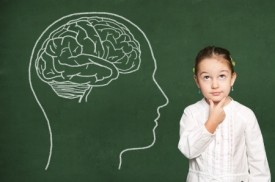“We have learned more about the brain in the past five years  than during all of human history combined,” said Charlie Rose in a TV series on the brain. Brain Awareness Week (starting March 14!) is a great time to reflect on the impressive progress we've made and to take time to explain this to the learners in your life.
than during all of human history combined,” said Charlie Rose in a TV series on the brain. Brain Awareness Week (starting March 14!) is a great time to reflect on the impressive progress we've made and to take time to explain this to the learners in your life.
But while the increase in our understanding of how the brain works has yielded a wealth of information, correctly interpreting and translating it into effective educational approaches often remains challenging. Brain Awareness Week provides an opportunity for you to tackle these challenges by engaging students with activities and events that raise awareness of the research and what it means for them. Here are five do’s and don’ts that will help learners feel good about what’s in their heads.
Don’t be overcomplicated. Do keep it simple.
Neurobiology may seem like a subject that’s complex even for college students, but it’s full of amazing facts that can be grasped even by young children. The point is not to comprehensively explain how the brain works, but to get them excited about its massive potential. Use tidbits like the brain’s billions of neurons and trillions of synaptic connections along with diagrams, illustrations, and multimedia content to grab their attention and encourage them to ask further questions.
Don’t buy into myths. Do explain potential.
New scientific research takes time to become embedded in the public consciousness, and much of what’s still considered common knowledge about the brain is based on information that’s either outdated or was never correct to begin with. Students may have been exposed to myths such as the idea that whether they are ‘left-brained’ or ‘right-brained’ will determine whether they are good at math, or that intelligence potential is inherited at birth and remains constant throughout one’s life. Educators need to work with students to dispel these sorts of preconceptions that can serve as obstacles to learning.
Don’t ignore individual challenges. Do know your audience.
Particularly when working with children from disadvantaged backgrounds, it is important to be aware of the unique challenges they face and the toll that such circumstances can take on their cognitive processes. Eric Jensen’s CHAMP model provides a useful framework for working with such students, outlining a set of mutually-reinforcing skills that can be strengthened and developed through specially-designed exercises and learning software.
Beyond particular skills and activities, a positive and reassuring learning environment is crucial to increasing the chances of success. This includes recommendations such as avoiding direct or punitive commands and hierarchical language, instead making students feel like they are part of a joint effort. Students should also be given ample opportunities and suggestions to rectify undesirable behavior through proactive positive contributions.
Don’t create new myths. Do focus on progress.
In the process of debunking old myths, we should be careful not to create new ones. As concepts derived from recent brain research have begun to enter the educational mainstream, common misrepresentations risk reinforcing the same educational obstacles they were meant to overcome in the first place. For example, as researcher Carol Dweck has noted, many educators have recognized the importance of having a ‘growth mindset’ in theory, but in practice seem to treat it as a fixed quality rather than a goal to be actively and consistently pursued.
Similarly, findings that students can benefit from making mistakes have at times led to a wrongheaded approach where students are simply praised for effort with no regard for results. While it is important to keep students motivated, the ultimate aim is for them to learn from their efforts and shift from unsuccessful strategies towards those that yield tangible progress – which will serve as further encouragement in turn.
Don’t be abstract. Do make it concrete.
While it is important for students to understand that our brains are capable of forming new connections, learning new patterns, and improving their processing and sequencing potential throughout our lives, it’s not enough for them to simply absorb this as an abstract piece of information. The key factor for students to grasp is their own agency – the fact that they can actually shape this process through their thoughts, attitudes, and actions. In other words, students should not only become aware of the brain as an organ with amazing abilities, but to realize that this incredible apparatus is theirs to use and improve.


Comments
I absolutely agree. I'm often
So: we need to that the whole